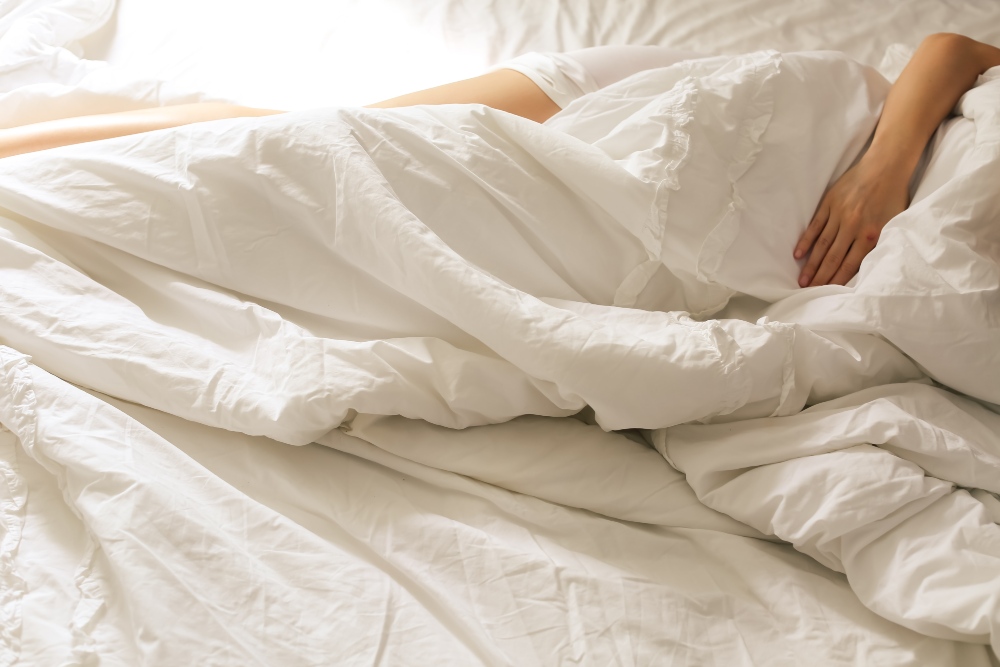
For many women, menopause is a natural and normal biological period in their life that is in part defined by a long period of hormonal changes. These hormonal changes create common symptoms, such as hot flushes and difficulty sleeping. For some women, menopause induced by medical treatment can cause even more sudden hormone profile changes, with even more dramatic symptoms.
Hormonal changes can affect sleep directly. Aside from hormonal replacements, we cannot directly impact those changes very much. However, there are ways we can minimise the impact on sleep by managing symptoms and our responses to sleeplessness. As explained in 'Ways to get a good night's sleep', the way we respond to sleeping troubles can have a significant impact on the quality and quantity of our sleep - independent of the effects of our hormonal changes.
Here are seven things you can consider if you are struggling to sleep during menopause:
1. Get the support you need if you are finding it an emotionally challenging time. If you feel anxious, or if you struggle with depression (also a common tag along to menopause), get the support you need not to bring overwhelm or worry into the evening with you. Consider journaling, listmaking or writing it all out in the afternoon, so it's not whirling around in your head before bed.
2. Wear performance wicking clothing to bed. If you have hot flushes, you may be surprised to learn that certain fabrics can feel cooler than wearing nothing. This is because we often sleep on cotton sheets, which can become damp and take a long time to dry. Wicking fabric clothing can help absorb sweat, make you feel cooler, and create a barrier between you and your sheets.
3. Ditch the memory foam. Foam mattresses and pillows are made of latex - rubber - and don't breathe. They make temperature regulation even harder than it already is. If your pillow or mattress is at the end of its life, consider replacing them. If they are not, consider a topper or pillow cover that creates a breathable barrier between you and your sleeping surface.
4. Consider cooling devices. There is quite a market for cooling pillows, cooling duvets and other devices to help you keep your temperature low. Always check with your doctor as they may not be safe for everyone to use.
5. If you wake in the night with hot flushes, get out of bed. All of the hormonal shifts and adrenaline of a hot flush can create a significant physical and emotional response. Consider leaving the bed and going into another room to avoid creating an association between these feelings and the bed. When things calm down, and you feel sleepy again, return to the bed. (It may take a lot of repetition to re-associate sleepy feelings and the bed if you've not done this yet).
6. Follow principles of cognitive behavioural therapy for insomnia. Things like getting up at a consistent time no matter how you've slept, waiting until very sleepy to go to sleep and not staying in bed when having hot flushes can have an enormous positive impact on the depth and quality of your sleep - even if you continue to have hot flushes. In fact, women who do CBTI as part of a programme are reported to have fewer hot flushes!
7. See your healthcare provider. There are lots of things that can be done at home to help support sleep; however, don't rule out medical support from your healthcare provider. There is no shame in needing support with the physical and emotional changes experienced in menopause.
Tracy Hannigan is one of the UK's leading sleep coaches and insomnia experts, running a sleep therapy practice for individuals with insomnia (www.tracythesleepcoach.co.uk). Tracy uses her background in psychology and her experience as a healthcare professional alongside her CBTI training to help people reclaim their sleep so they can live the active and vibrant lives they want and deserve.
Tagged in Menopause Sleeping Tips

